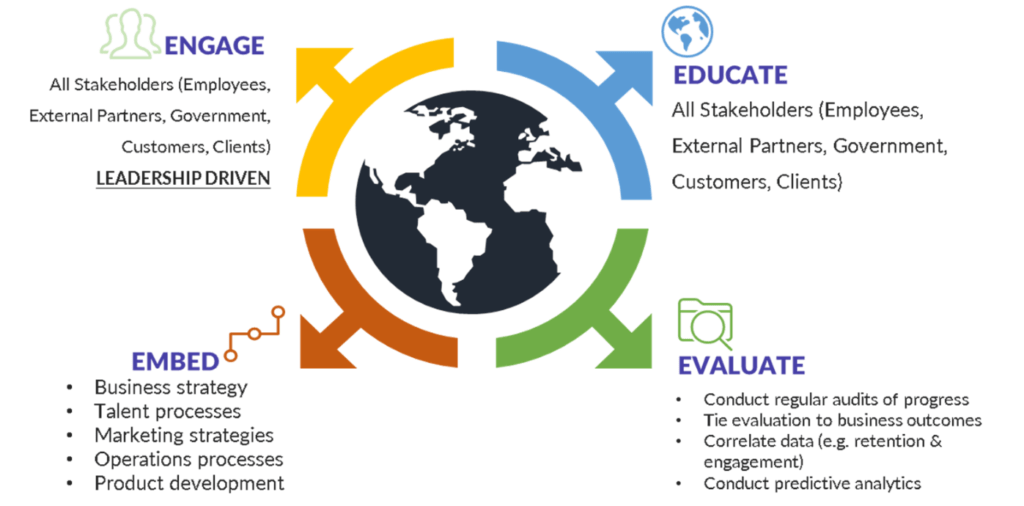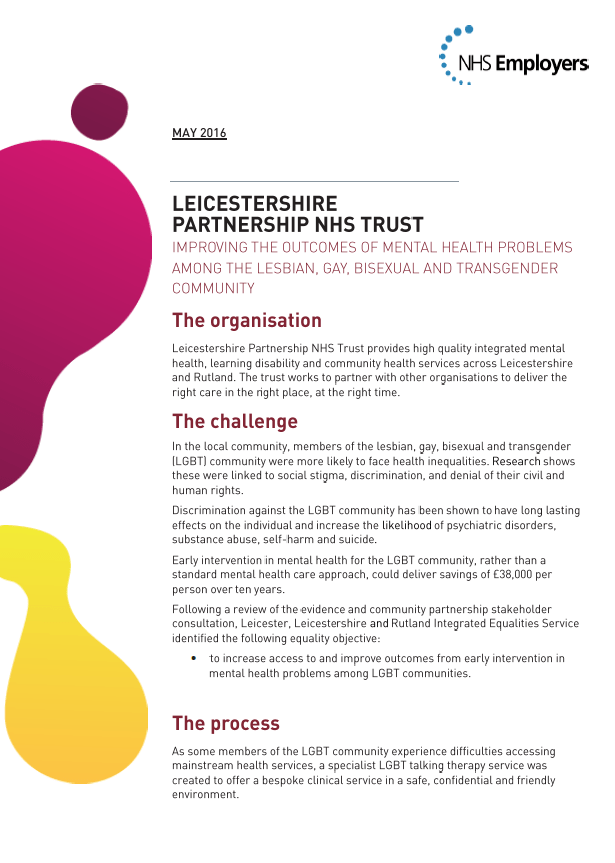
Last week, we explored the power in creating spaces for Bold, Inclusive Conversations™ as a necessary stride toward equity. Equity requires a ‘both/and’ approach, grounded in strategies that effect change at the individual and organizational levels of system.
We encourage our clients to view their D&I strategy as a journey, and typically recommend a three-year plan, consisting of top-down and bottom-up efforts. The strategic plan should include goals that link organizational business outcomes to D&I results, as well as goals that call for systemic change through individual cultural competency approaches. The model below conceptualizes what it means to address diversity, equity, and inclusion within an organization through a strategic, comprehensive approach.
At The Winters Group, a Strategic, Comprehensive Approach includes practices that
- Engage all stakeholder—both internal and external
- Educate all stakeholder—leveraging a bottom down-top up approach that balances the necessity for executive leadership buy-in and front-line competence & execution
- Embed in all business process—avoid ‘pigeon-holing’ DEI to Human Resources or Recruitment (these areas are a start, but should lead to broader engagement and impact)
- Evaluate success and impact by identifying quantifiable metrics (employee data, predictive analytics, etc.)

So, how can organizations make this ‘real?’ In honor of Pride Month, we’ve identified a case study that highlights how one UK-based organizations took a strategic, comprehensive approach to improving the outcomes of mental heath care among the LGBTQ community. While this organization is not a client of ours, we admire their efforts in making equity ‘real.
Equity requires a strategic, comprehensive approach-- how do we make that real? Click To Tweet



















